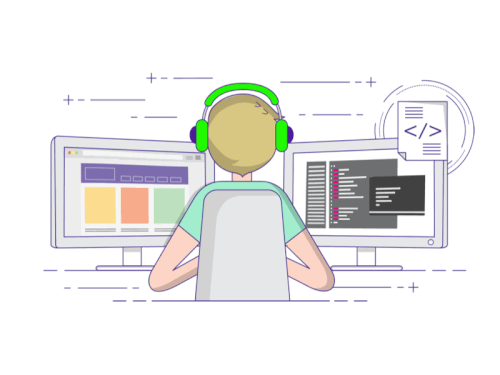Data Structures and Algorithms (DSA) form the backbone of efficient programming and problem-solving. Whether you aim to crack coding interviews or build a strong foundation in computer science, mastering DSA in C++ is one of the best paths to take. C++ offers speed, flexibility, and control over memory management — all essential for understanding how data structures work under the hood.
Let’s explore a step-by-step roadmap to learn DSA in C++ effectively.
1. Learn the Basics of C++
Before diving into DSA, it’s crucial to have a good understanding of the C++ language. Make sure you’re comfortable with:
-
Syntax and data types
-
Loops and conditionals
-
Functions
-
Arrays and strings
-
Pointers and references
-
Object-oriented programming (OOP) basics – classes, objects, inheritance, and polymorphism
👉 Recommended Resources:
-
Book: “Let Us C++” by Yashavant Kanetkar
-
Online Course: C++ Programming by freeCodeCamp or GeeksforGeeks
2. Understand Time and Space Complexity
Before you start solving problems, you must understand how to analyze code performance.
Learn about:
-
Big O, Big Theta, and Big Omega notations
-
Best, worst, and average case complexities
-
Space-time trade-offs
👉 Practice: Try comparing the efficiency of different sorting algorithms (e.g., Bubble Sort vs Quick Sort).
3. Master Basic Data Structures
Start with the core data structures that form the foundation for complex algorithms:
-
Arrays – Searching, sorting, reversing, rotating
-
Strings – Palindromes, pattern matching, frequency counting
-
Linked Lists – Single, double, and circular lists
-
Stacks – Using arrays and linked lists, applications like expression evaluation
-
Queues – Simple, circular, priority, and deque implementations
👉 Tip: Implement each data structure from scratch to understand how they work internally.
4. Dive Into Advanced Data Structures
Once you’re confident with the basics, move to advanced data structures that help in solving more complex problems.
-
Trees: Binary trees, BSTs, AVL trees, Heaps
-
Graphs: Representation, DFS, BFS, shortest paths (Dijkstra, Floyd-Warshall)
-
Hashing: Hash tables, collision handling, unordered maps
-
Tries: For string pattern problems
-
Segment Trees & Fenwick Trees (BIT): For range queries
👉 Practice Platforms: LeetCode, Codeforces, and GeeksforGeeks
5. Learn Important Algorithms
After data structures, focus on understanding key algorithms that help solve computational problems efficiently.
Sorting Algorithms
-
Bubble, Selection, Insertion
-
Merge Sort, Quick Sort, Heap Sort
Searching Algorithms
-
Linear Search, Binary Search
Recursion and Backtracking
-
Solving problems like N-Queens, Sudoku, or Maze paths
Dynamic Programming (DP)
-
Understanding overlapping subproblems and memoization
-
Classic problems: Fibonacci, Knapsack, Longest Common Subsequence
Graph Algorithms
-
BFS, DFS
-
Minimum Spanning Tree (Prim’s, Kruskal’s)
-
Dijkstra’s and Bellman-Ford algorithms
6. Practice Problem Solving
Consistency is key. Dedicate time daily to solving problems of varying difficulty levels.
Start small, then progress to medium and hard-level challenges.
👉 Best Practice Platforms:
-
LeetCode
-
HackerRank
-
CodeChef
-
GeeksforGeeks Practice Section
👉 Tip: Focus on understanding the logic, not just memorizing solutions.
7. Learn STL (Standard Template Library)
C++ STL provides pre-built implementations of common data structures and algorithms. Learning STL will save you time during contests and interviews.
Common STL components include:
-
Vectors
-
Stacks and Queues
-
Maps and Sets
-
Priority Queues
-
Algorithms like sort(), reverse(), count()
👉 Tip: Understand how each STL component works internally before relying on it completely.
8. Build Projects and Apply Knowledge
Once you’re confident with concepts, try applying DSA knowledge in real-world scenarios.
Some project ideas include:
-
Text Autocomplete using Trie
-
Pathfinding Visualizer using Graphs
-
Mini Search Engine
-
Memory Management Simulator
This helps bridge the gap between theory and practical implementation.
9. Participate in Coding Contests
To test your speed and logic under pressure, participate in coding competitions.
Popular platforms include:
-
Codeforces
-
AtCoder
-
LeetCode Weekly Contests
-
CodeChef Long Challenges
These contests simulate interview-like challenges and improve your problem-solving efficiency.
10. Stay Consistent and Keep Revising
DSA is not a one-time learning process. You’ll need to revise concepts regularly and revisit problems you couldn’t solve before.
Make a daily or weekly schedule to practice and track your progress.
Final Thoughts
Learning DSA in C++ can seem challenging at first, but with a structured roadmap, consistent practice, and patience, you can master it. Start with the basics, understand how each data structure works, and gradually move to more complex algorithms. Over time, you’ll not only improve your coding skills but also develop the logical mindset needed to crack top tech interviews.

